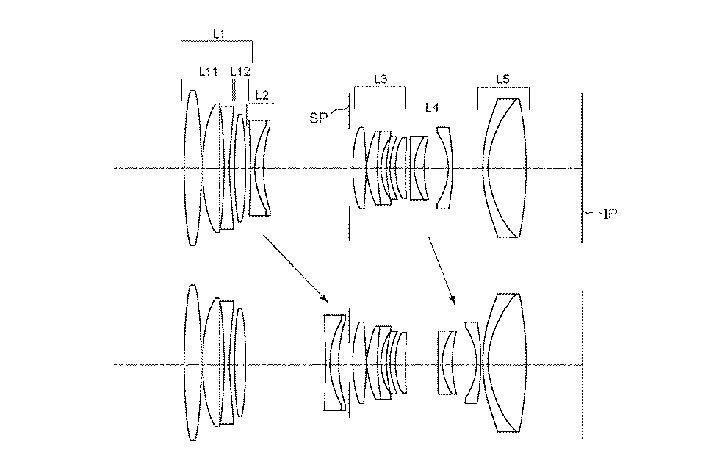Hi-Lows-Note via Northlight Images has uncovered a patent for an RF mount macro lens. The optical formula is for an RF 90mm f/2.8L IS Macro. Northlight points out that the image stabilization group (L12) is further forward than the normal positioning for IS groups.
Japanese Patent Application No. 2017-108266 shows two different optical formulas.
Specification and lens arrangement of embodiment 3
Focal length: 86.00mm
F number: 2.87
Half angle of view: 14.12
Image height: 21.64mm
Lens length: 115.07mm
Back focus: 15.93mm
Specification and lens arrangement of embodiment 1
Focal length: 97.00mm
F number: 2.92
Half angle of view: 12.57
Image height: 21.64mm
Lens length: 115.12mm
Back focus: 20.01mm
Some of our articles may include affiliate links. If you purchase through these links, we may earn an affiliate commission at no extra cost to you.




From my experience, they usually round up. Or they choose a focal length that is better for marketing. In my opinion "85mm" is generally marketed as a portrait lens, whereas macro lenses over the years have tended to be 90mm or 100mm.
You could line up 5 different "50mm" lenses, and they'll likely all be a slightly different focal length.
Does one design's last lens stick 4mm deep into the body (unlike the other design)?
Or was the patent filed when the flange distance was not finalised yet?
Please. I’ve seen hundreds of reviews of lenses in 5+ decades, as well as having benched more than a few myself. Perhaps a handful has matched published specs.
When benching focal length I presume you either measure the distance from the front element to the sensor plane, or measure field of view and back calculate, but how in the world would you bench f number? Somehow gauge the diameter of the aperture as viewed through the front element?
I love the MP-E, but I think it could definitely use an update. I don’t really think anything should change other than the low end of the magnification range. If it started at .5x I think it would be a huge benefit to field shooters. As far as the top end, you can always add extension tubes. In my experience, 3.5x-4x is usually the upper limit in field use.
I’m constantly presented with the dilemma of using the MP-E or a 100L with extension tubes. If I think I’m going to see anything larger than a paper wasp (and they’re even hard to frame at 1x) I take the 100L. The 100L is great, but is nowhere near as sharp as the MP-E. Autofocus at higher mags is inconsistent and nearly useless, so I use it basically the same way I do the MP-E, moving back and forth until I hit where I want.
This all said, a 90-120mm that went to 2x could be interesting. Add a couple of tubes and you’re into the 3x-4x range. Make a proper white L macro and include a drop-in magnifying element a-la the Raynox 250 and similar. I’m sure this would be a huge lens though... Ok, enough pipe-dreaming :)
How about focus at infinity, take a picture of a small light source a known distance from the sensor plane and measure the diameter of the resulting bright circle?
If you cannot get hold of a true point light and don't know the expected size (because you don't know the real focal length), take two identical ones at a known distance from each other and you have a scale reference so you can compensate for the size of the light. Two 3mm LEDs on some perf board would suffice.
If focused at true infinity, the horizontal image angle should be 2*atan(26/(2*f)) for a rectilinear lens and close to image centre, magnification of oof light sources at 50*f distance become small enough (roughly 5% of image height for f/2) that distortion effects on reasonably modern lenses become smaller than the precision you get from counting pixels.
Ah. This was a macro lens. Then everything gets really tricky. The above is using the assumption that at a reasonable distance, the lens behaves in a way close enough to that of an ideal lens, where 1/f=1/o+1/i
Mea culpa
I wonder how many MP-E 65 users actually use it primarily in the field? I don't think it was really designed as a field lens, it really is far more at home clamped to a serious tripod at home. Once you get down to 5x you're pretty much required to stick to f/2.8 because of diffraction which means your depth of field almost doesn't exist, so unless you're shooting perfectly flat things you absolutely need to stack, and that's no fun out in the field :)